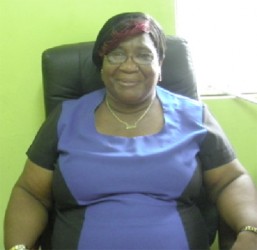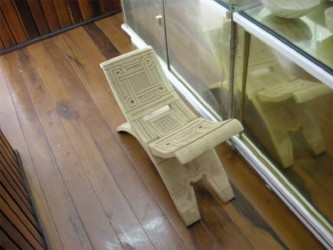The Museum of African Heritage for years has been working to keep the rich cultural history of Africans alive and administrator Jenny Daly said that the museum is not just a treasure chest of African art but is also active in revitalizing African folklore groups around the country.
Located at Barima Avenue, Bel Air Park, the museum became a reality in 1985 when historian Dr Herbert Nicholson not only donated over 200 African art pieces but also handed over his house to the government for museum purposes.

Today the museum is still housed in the building where once Nicholson lived and Daly said that it was following the accessioning of the collections that the museum became a reality even though it only was opened to the public in 1984.
The pieces were accessioned by someone from the African museum in Brooklyn, something which was facilitated by Unesco.
Nicholson donated his home after his wife died and he re-migrated to London, England, and while the interior of the building has changed the outside is still very much as it looked when he lived there.
In a recent interview with the Stabroek News Daly said that most of the pieces donated by Nicholson were what he had purchased during his many trips in Africa, and were part of his personal collection which was kept in his home
In 1985 it was artist and archaeologist Dr Denis Williams who arranged the establishment of the museum, which at that time was called the Museum of African Art and Ethnology.
“So he would have done the art and ethnology part, but after he died we decided to change to the Museum of African Heritage to have it on a wider base so that we could deal with African Guyanese and Africans in the diaspora,” Daly said.
Most of the pieces in the museum are of West African origin and Daly said they later decided to include research from the Caribbean and also historical information from Guyana.
“So what we do is like… a lot of research and talk to historians…and from them we would get a broader idea about the impact of slavery and we also talk with older folks from villages,” Daly said, explaining that the information is compiled into book form and stored in the museum’s library.
The museum also holds lecture series in various regions so as to keep African history alive, and this sees them assisting African culture groups who are attempting to keep the traditions vibrant in their programmes.
“It is just to help them and give them that energy to keep the African folklore going… we try to revitalize the culture,” Daly said, adding that the museum is always a part of all national African based activities.
She is optimistic that African culture is being kept alive as many of the groups which were dormant in the past have been revitalized, and they can now turn to the museum for assistance. She feels because of this they have additional vigour.
“The museum is here to let persons know that their culture is important to them, and let them have that appreciation… and I try to instil in the group not to have the young people dance and say poetry but also teach them the meaning of the dances, so that when they go on stage they must be proud of the dance that they are doing because they know the meaning and where it came from,” she said.
The museum continues to purchase art and persons also continue to donate pieces.

The museum needs more space, and Daly said they are working on expanding the building so that all the pieces they have can be displayed.
Daly has been with the museum from the inception and while she is the administrator she also acts as the curator. She always lets her staff know the importance of the pieces they work with and teaches them how to conduct tours.
Before being attached to the museum she worked at the Burrowes School of Art when it was located at Eccles, and it is there she learnt to appreciate art. Before that she worked at the National Cultural Centre.
She admits that “art is a thing that not everybody appreciates” but said her relationship with art has seen her appreciating her culture and knowing that there is a story behind every item of art.





